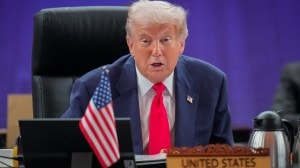Moving from holding to acting mode
On the India China story, while none doubted that the current economic momentum in China will continue in the foreseeable future notwithstanding problems, there were concerns on India’s ability to address multiple serious policy challenges

Notwithstanding the soccer rage which swept Europe, July was also a month of conferences and seminars. Quite a few of them were either India-centric or atleast had special sessions on India and China. Private investment sees huge opportunities in India but all of a sudden contrarian impressions are gathering ground.
Credit Suisse, the prestigeous Swiss bank, organised a special India event with its leading corporate clients and invited me to address them on the theme of ‘India : The Way Forward’. When I outlined the broad features of the Eleventh Five Year Plan, including the critical challenges, there were few who doubted the outcomes. No doubt, concerns were raised on our implementational ability, on whether the coalition government will last and if macro stability, particularly fiscal rectitude, will be sustained at a time when populist expenditure pressures had gathered momentum.
Prevarications on our energy policy bothered quite a few. There was one interesting question on whether as a nation we were ambitious enough. No doubt, debilitating poverty leads to despondency and smothers hope for a better future. The economic growth in recent years has seen a huge burst of innovative entrepreneurship and these entrepreneurs do not come from established families nor are they concentrated in metro cities alone.
The entrepreneurial culture and the urge to improve life quality based on hope and expectation is an important driver to shape the future. The 200 odd corporate clients of Credit Suisse were all senior investors and the Bank must have judged the right moment to give them a bit of Indian overdose and quite a few of them who are already in India seemed to carry the message to others that it was time to invest. On the whole, the Credit Suisse roadshow was more effective than any of our official versions.
In an unrelated event, the ASPEN Institute Italia held their fourth Dialogue on World Economy in Florence on the broad theme of ‘The Asia Pacific Link: How the East is Shaping the West’. I was a panelist in a session on ‘India, China: Are they the New Locomotives?’. There were other interesting sessions on a broad range of issues like ‘Global Growth: The Big Savers and Big Spenders’, ‘Energy: The demand shock in time of geopolitical uncertainties’; ‘The Comeback of Japan’; and issues of global governance. On the issue of global imbalances, John Lipsky, the newly appointed First Deputy Managing Director of the IMF, argued that there was no imminent collapse on account of structural imbalances and in fact notwithstanding these concerns, the period 2002-06 had seen fastest global growth in the last 30 years with core inflation rate at lowest in the last 40 years in spite of oil prices, and that overall this has been a period of unexpected economic success.
The structural changes included the growth of international capital market, a rapid recovery of Asian growth within two years of the crisis, severe strains in the European economy following the German reunification, a restructuring of the North American economy following NAFTA, rapid technological changes leading to paradigm productivity shifts and growing concerns on energy security. Even while growth had continued, there were risks to continued global prosperity arising from a marked slowdown in productivity, a sudden disruption of financial markets and serious geo-political uncertainties. The global economy needed to change in the obvious direction that savings rate in the US needed to go up substantially, while the rest of the world, particularly Asia, should save less and consume more.
While there was no consensus on the sustainability of the structural global imbalances, Lorenzo and Martin Ridardo characterised the present period of global imbalances as one of unstable equilibrium—the two were inherently contradictory. There was no doubt that Europe needed to continue structural reforms and a soft landing was possible through a combination of monetary and fiscal policies in the US and Asia.
While everyone preferred a ‘‘slow adjustment than a collapse’’, and there was always a trade-off between a more balanced but more uncertain world, we need incentives for all three major actors to orchestrate in tandem. China must boost internal consumption and reduce excessive dependence on export-led growth; Europe must improve R&D and foster innovation at the cutting edge of development; while the US must increase savings, reduce fiscal deficit and restrain consumption.
While Tim Adams, Under Secretary of the US Treasury, outlined the US response including a sharp reduction in fiscal deficits following unprecedented tax buoyancy and signs of increased domestic savings, there was little consensus on whether the present imbalances could last for many years and what would constitute the ingredients of an orderly transition particularly at a time when multilateral approaches were seem to be weakening with increased questions on the future of the IMF and the collapse of the multilateral trade negotiations. The danger is that current complacency and lack of urgency could not rule out unpleasant surprises.
On the India China story, while none doubted that the current economic momentum in China will continue in the foreseeable future notwithstanding overheating, environmental concerns, growing income disparities between urban and rural areas and excessive export dependence being replaced by enhanced consumption and lower savings, there were concerns on India’s ability to address multiple serious policy challenges. The mood in Florence was more cautious than Zurich—bankers see huge prospects but investors would like more tangible steps to strengthen private sector, depoliticise issues of governance, particularly human resource development, significant improvement in public delivery system and improving the regulatory environment.
No one doubts that India’s potential, to say the least, remains under-exploited, and the issues raised by foreign investors are not very different than the concerns raised by the Planning Commission in their Approach document for the Eleventh Five Year Plan. However, resolving the multiple contradictions embedded in our policy framework will never be easy. Coalition politics only exasperates and delays their resolution. The next few months will demonstrate whether the Government is in a holding or an acting mode.






- 01
- 02
- 03
- 04
- 05

























